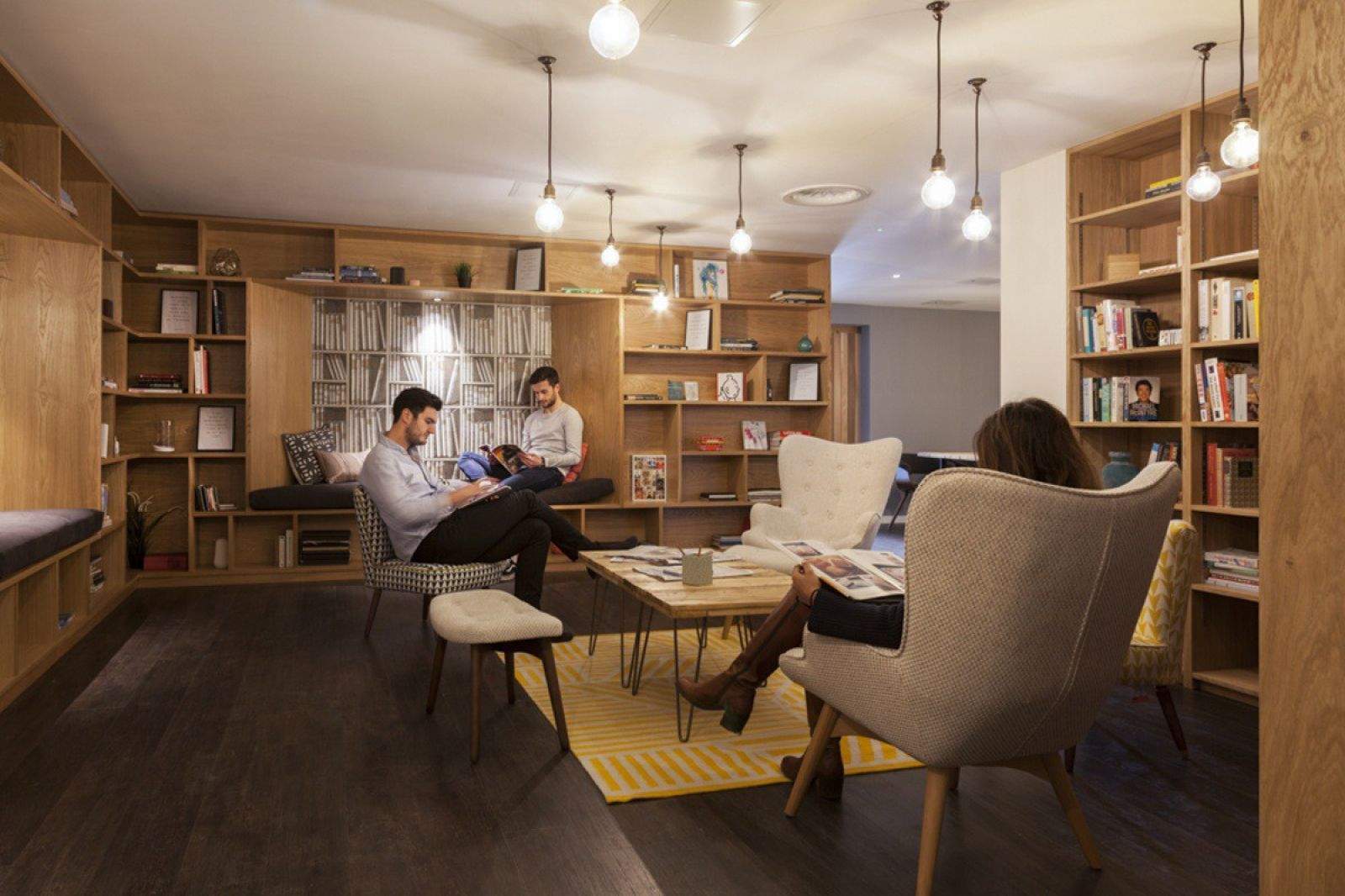
On Monday the Federation of Master Builders published the results of a vast survey of UK homeowners asking them how the country’s growing housing crisis should be solved. The most popular answer, selected by 33% of the 2,000 respondents, was to build more co-living developments.
“Even the vast majority of those who are lucky enough to own their own home recognise that there’s a housing shortage,” said Brian Berry, Chief Executive of the FMB.
“When asked about solutions to this problem, the most popular remedy was to construct more co-living developments, which are becoming more and more popular in major cities right across the globe.”
Building on the increasingly widespread practice of house-sharing, co-living developments are custom-built projects where individuals can rent rooms – usually equipped with an en-suite and kitchenette – but share access to large common areas.
One of the most notable projects of this type is The Collective’s Old Oak development in London, where compact rooms are countered by communal kitchens and dining areas and a vast selection of common spaces, including a spa, gym, library, cinema and restaurant.
While for many it is a desirable choice among limited housing options, the approach isn’t for everyone. So should building more co-living developments be a priority in the UK?
How well do you really know your competitors?
Access the most comprehensive Company Profiles on the market, powered by GlobalData. Save hours of research. Gain competitive edge.

Thank you!
Your download email will arrive shortly
Not ready to buy yet? Download a free sample
We are confident about the unique quality of our Company Profiles. However, we want you to make the most beneficial decision for your business, so we offer a free sample that you can download by submitting the below form
By GlobalDataCo-living developments are not for everyone
For younger people, the idea of sharing a living space is extremely commonplace.
“The concept of sharing a living space is not alien to the UK; many young people are happy to live with friends or even strangers, as the success of spareroom.com has proven,” agreed Marc Trup, founder of property management platform Arthur Online.
However, it’s clear that the prospect of true co-living is deeply unappealing to many British people, outside of younger groups.
“There is culture in this country of home ownership, which people will need to get over before the idea of co-living can really thrive,” said Charles Bettes, MD of architectural practice gpad london.
“Younger people are starting to feel more relaxed about seeing this as a legitimate long-term option as well as an opportunity to buy into a way of living.”
“Co-living is something people generally do when they first move to the city,” added Jason North, associate director of estate agent BARNES.
Central to its appeal is the feeling of community and financial security, particularly at developments where rent is all-inclusive.
“It comes out of not wanting to live alone in a strange city when starting one’s first job. It also comes out of financial necessity and is normally done through the rental sector,” said North.
Creating community: co-living as a solution to life-long renting
However, while co-living is currently the domain of the young, that may change. Many millennials are now facing the reality that they may be renting for the rest of their lives. Recent research suggests a 25-year-old in London will now have to save until they are 54 in order to get onto the property ladder.
This paints a reality where alternative living models not only are likely to be considered, but may be an active necessity, and here co-living may present an appealing option, particularly as it becomes more sophisticated and diverse.
“As the co living companies mature we will see a diversification in their offerings and people will buy into co living companies as brands, associating them with a way of life,” said Bettes.
Notable to its longer-term appeal is the fact that co-living provides the opportunity to re-inject something that many of us have lost: community.
“Co-living offers opportunities to really asses the way we currently live and consider how we want to do so in the future. It raises serious questions regarding community and family,” he explained.
“In London you can live somewhere for years without feeling like part of the community and knowing your neighbours. Co-living has the opportunity to offer people this sense of community at the same time as creating more affordable places to live.”
Cost is always going to be a significant factor in the appeal co-living, but providing appealing community spaces is likely to be an increasingly important draw.
“The idea of smaller homes is a good way of reducing costs for residents,” said Bettes.
“However, it’s the added spaces such as community rooms, shared spaces and communal terraces that could really make these developments exciting alternatives when people are deciding where to live. “
Barriers to making co-living developments a reality
While there is growing enthusiasm for co-living developments, there remain issues, particularly around strict planning regulations. Tightening rules on the minimum size of new living spaces, particularly in the UK’s capital are putting some developments under threat.
“There have been reports that some co-living spaces would not get planning permission today due to the size of their rooms,” said Trup.
Such regulations have been put in place to protect renters from unscrupulous developers, but as the housing crisis continues to squeeze, they may be unintentionally blocking the development of appealing rental options.





